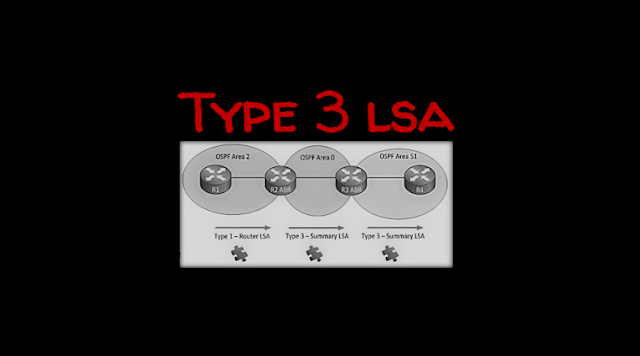Open shortest path first is the dynamic routing protocol which uses the link state database and this database is the collection of the link state advertisement so here below we have the following seven types of the OSPF link state advertisement.
OSPF LSA Types
- LSA Type 1 is known as the Router LSA
- LSA Type 2 is known as the Network LSA
- LSA Type 3 is known as the Summary LSA
- LSA Type 4 is known as the Summary ASBR LSA
- LSA Type 5 is known as the Autonomous System external LSA
- LSA Type 6 is known as Multicast OSPF LSA
- LSA Type 7 is known as the Not So Stubby Area LSA
Router LSA Type 1
Each router in the area flood the router link state advertisement that is known as the type 1 LSA.Network LSA Type 2
The second type of LSA is created for the multi-access networks and in this LSA the Designated Router advertise in the multi access network.
Summary LSA Type 3
In this type of LSA if one router flooding the router LSA type 1 with in the area and the other router that is the ABR (Area Border Router) store that in it's link state database and if the other router that is from the other area need to know about that advertisement and the ABR is the router which is going to create Summary LSA Type 3 and flood it into the other area and this link sate advertisement will flood the into the all the other areas of our the Open Shortest Path First Network. These type of entries in the routing table show with the OIA entries.
Summary LSA Type 4
This LSA is also known as the summary LSA but in this LSA we have the summary of the Autonomous system border router. Let suppose we have a router 1 that is the directly connected to the router that is from the other autonomous system so that case will make the router 1 Autonomous system border router and Router 1 will flip the bit in the router LSA Type 1 and it will create the a Summary ASBR LSA Type 4 and flood it into the other area.
Externals LSA Type 5
A prefix on the RIP router as shown in the figure 5 when this network redistribute into the OSPF router 1 will create the External LSA and in the routing table that will shown as entries with E2, E1.
Multicast LSA Type 6
This type of LSA is reserved for the multicasting purposes.
NSSA LSA Type 7
NSSA areas are the types of the OSPF areas that do not allow the externals routes means type 5 externals LSA. So here we have same scenario Router 1 is still our ASBR that redistributing the routes RIP into the OSPF and type 5 is not allowed so the alternate solution to flood the information we have a type Type 7 LSA that is NSSA LSA and this routes will show in the NSSA as N1, N2 entries.















0 Comments